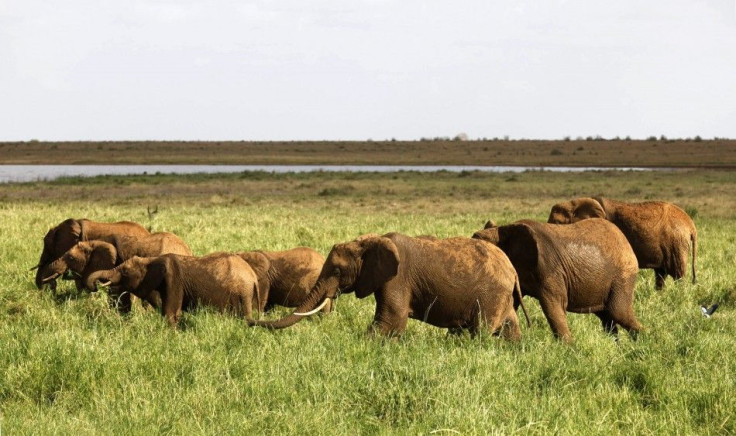Oldest Elephant Herd Footprints Discovered in Arabian Desert

Researchers have discovered rare fossilized footprints in the Arabian Desert that are revealed to be of the oldest elephant herd in history.
At an archaeological site named Mlesia 1, researchers concluded that the prehistoric footsteps are from four-tusked elephants. Researchers will study the fossilized footprints to better understand how the elephants interacted socially.
Basically, this is fossilized behavior, said Faysal Bibi, a vertebrate paleontologist at the Museum for Natural History in Berlin, reported CBS. This is an absolutely unique site, a really rare opportunity in the fossil record that lets you see animal behavior in a way you couldn't otherwise do with bones or teeth.
Mlesia 1 is located in the United Arab Emirates. The region was once known to many animals including, hippopotamuses, antelopes, giraffes, pigs, monkeys, rodents and, of course, elephants. These animals took shelter and feasted near a large flowing river, in the area. However, the river slowly dried up/
Other fossils and footprints have been found in the area before. However, it was not until January 2011that archaeologists were able to map out the area for the first time. They we realized what we had and how we could go about studying it, Bibi said.
Once we saw it aerially, it became a much different and clearer story, said researcher Brian Kraatz at Western University of Health Sciences in Pomona, Calif, reported CBS. Seeing the whole site in one shot meant we could finally understand what was happening.
The footprints cover a very large area, of approximately 12.3 acres. Comparatively, that is about the size of nine U.S. football fields.
The trackways are visually stunning, said researcher Andrew Hill at the University of Poitiers in France, reported Live Science. It is quite obvious to anyone, without any technical knowledge, that these are the footprints of very large animals, and to learn that they are over 6 million years old presents a visitor with the sensation of walking back in time.
Researchers said that these elephants looked very different from their modern day descendants. The footprints most likely came from the Stegotetrabelodon syrticus, the earliest known member of the elephant family.
Analysis suggests that at least 13 Stegotetrabelodon syrticus of different sizes and ages walked trounced the mud, leaving behind tracks. The tracks were then hardened and buried and uncovered by erosion.
Like the human hand-prints in Paleolithic caves, animal trackways crystallize in time [the] identity and behavior of the organisms that made them, and yield rare insights about these organisms, which fossil bones alone cannot provide, said paleontologist William Sanders of the University of Michigan, reported Live Science.
© Copyright IBTimes 2025. All rights reserved.





















